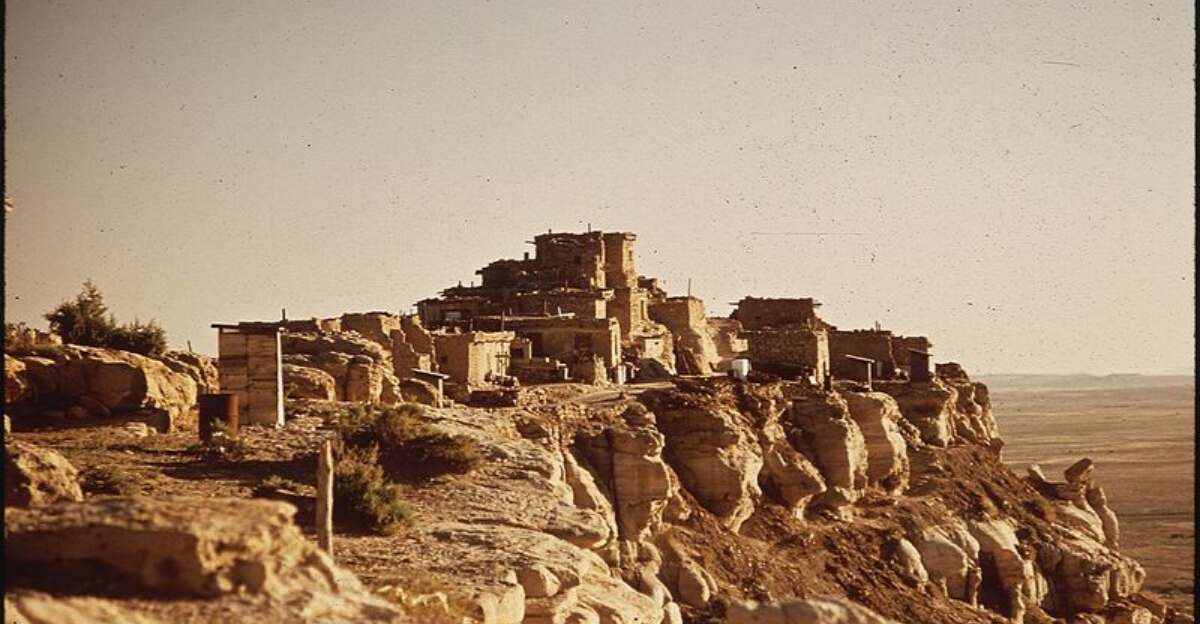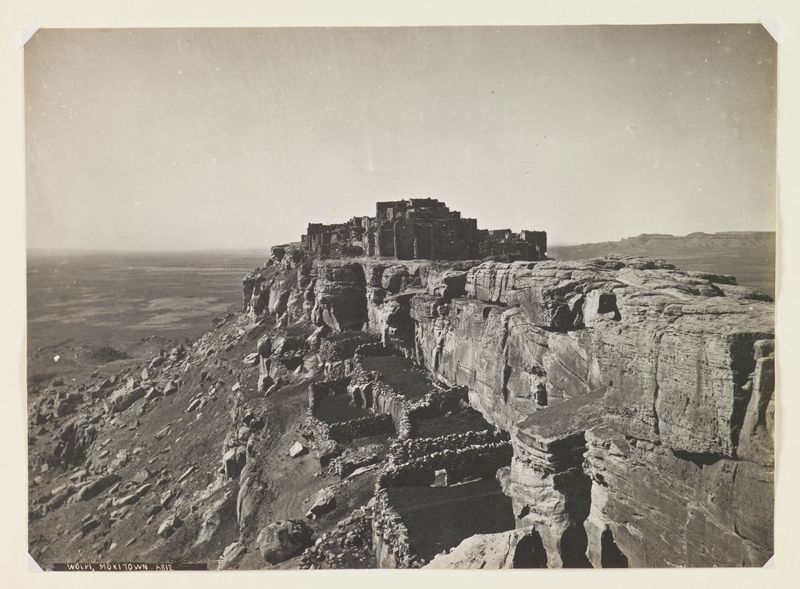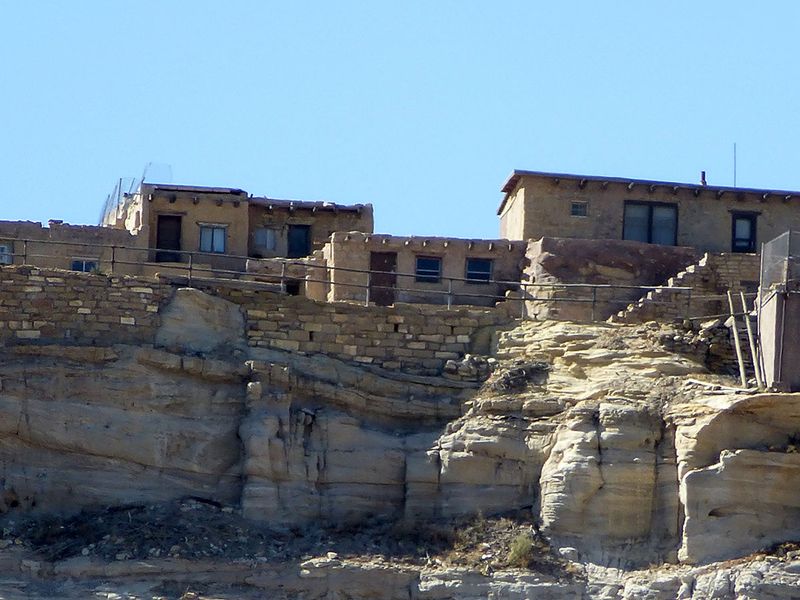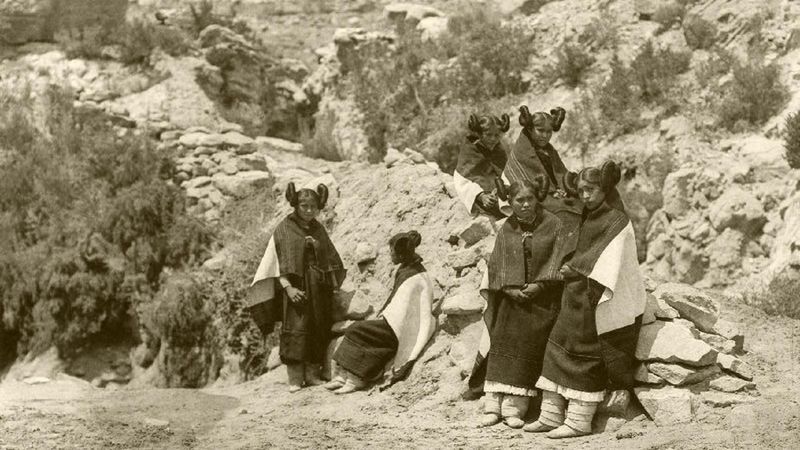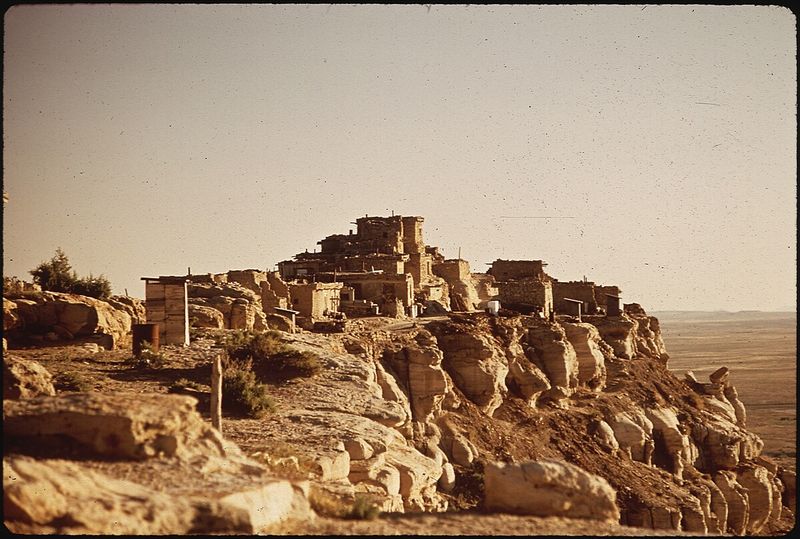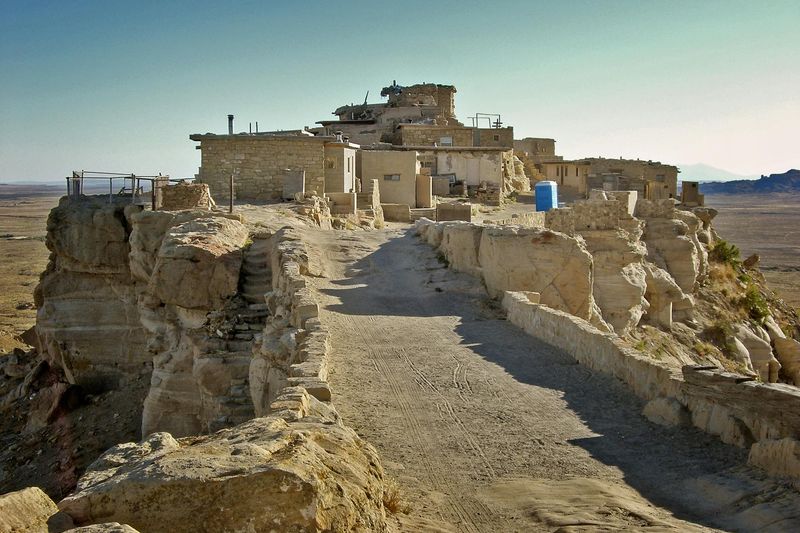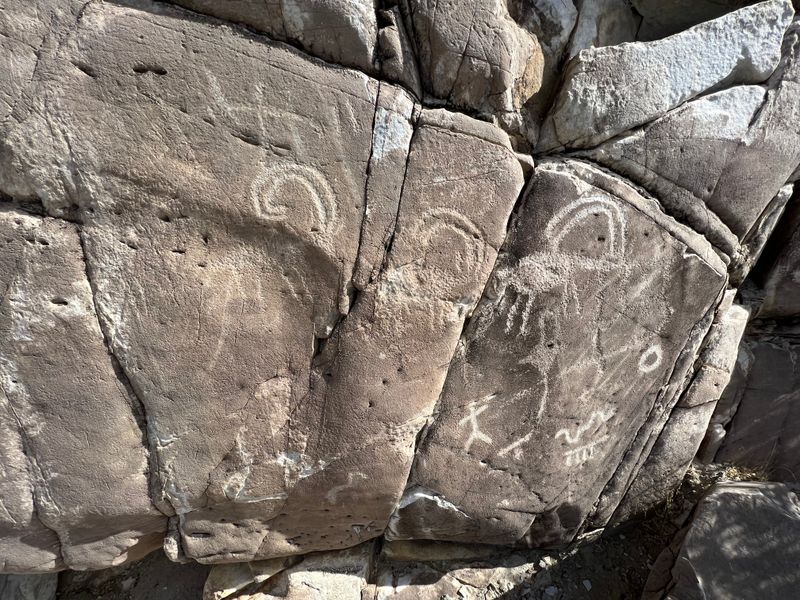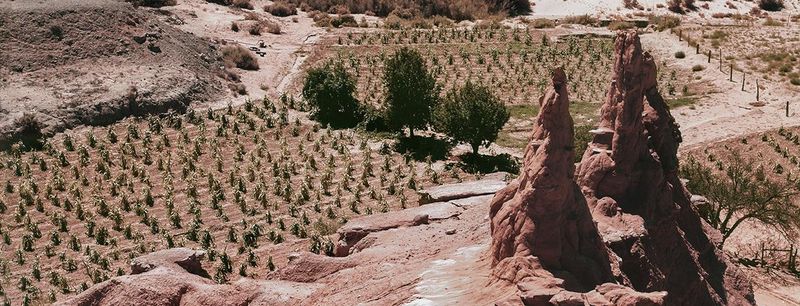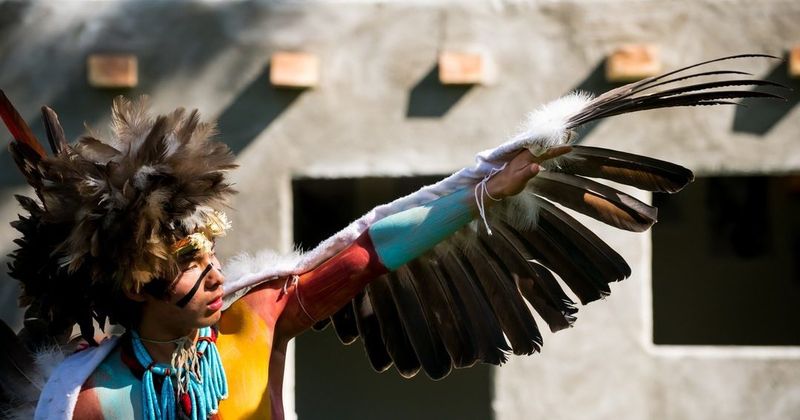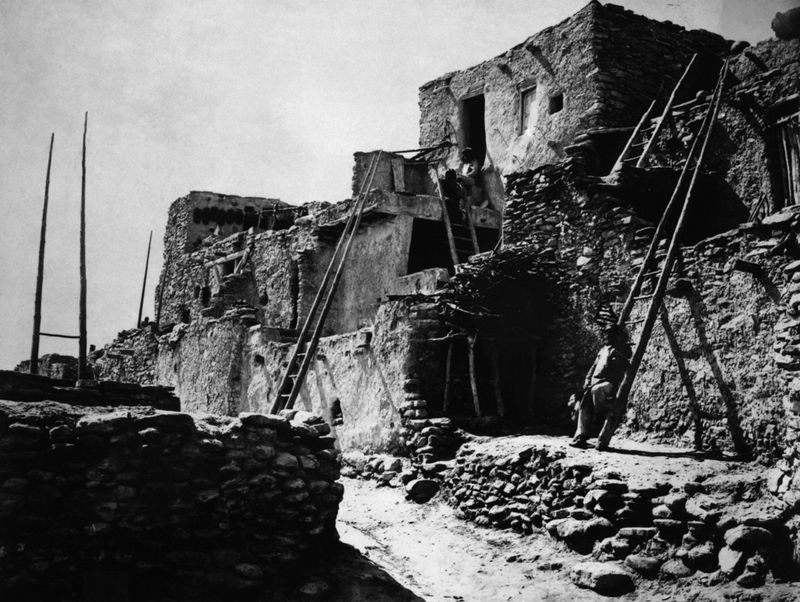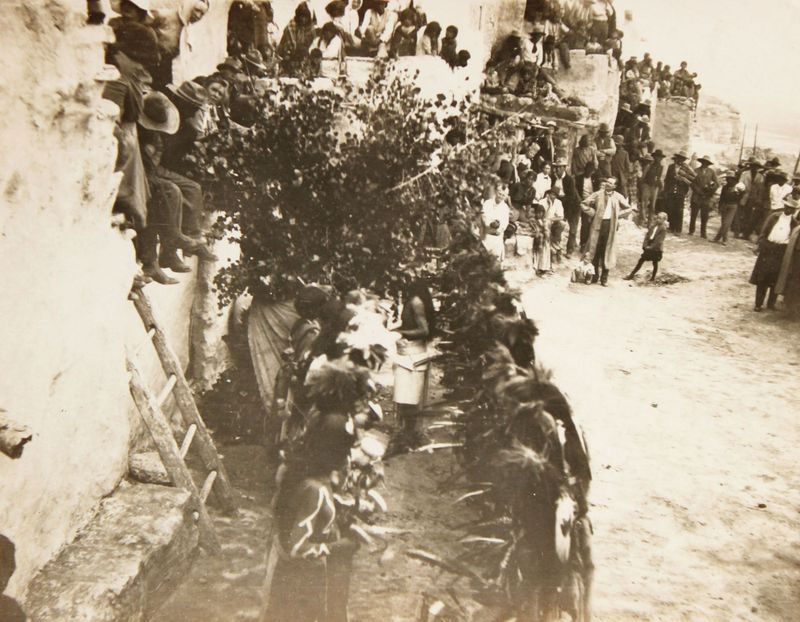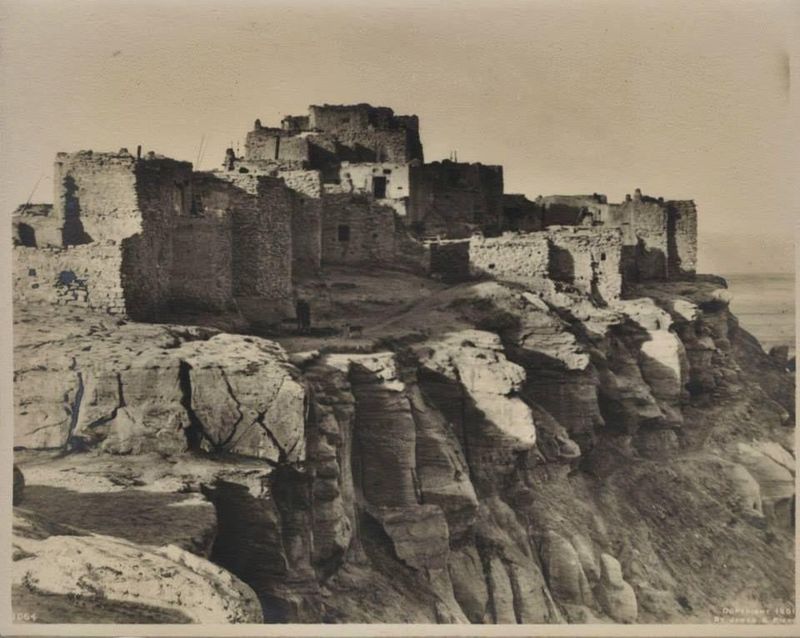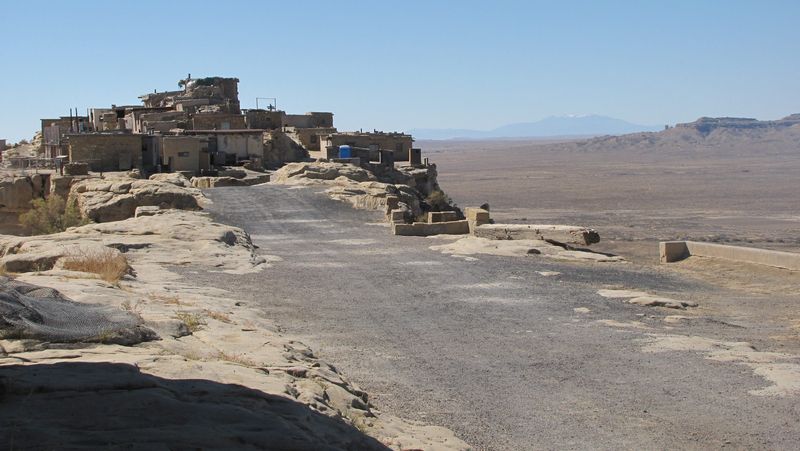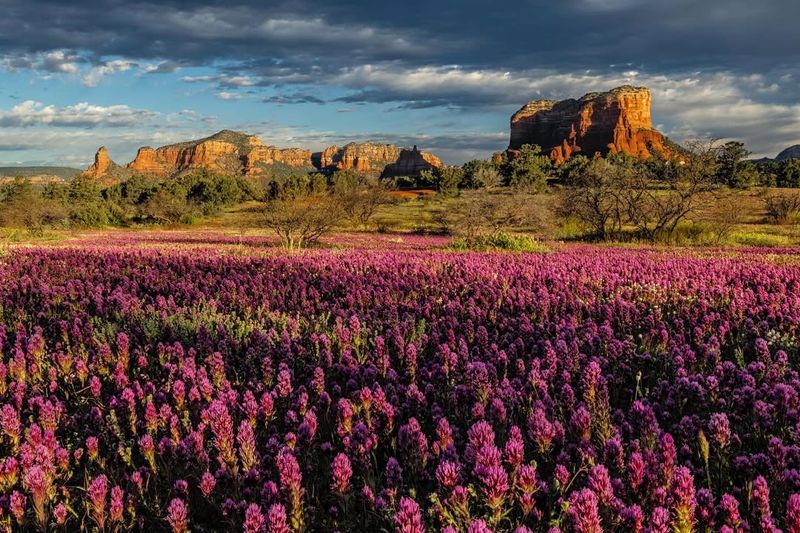Nestled deep within a canyon in Arizona lies a village that has stood the test of time for over 900 years.
This ancient settlement is a testament to the ingenuity and resilience of its inhabitants, who thrived in a challenging environment. Discover the fascinating history, architectural wonders, and cultural significance of this hidden gem.
1. The Mysterious Builders
Who were the ingenious architects of this secluded village? Historians believe the village was constructed by the Ancestral Puebloans, a civilization known for their impressive masonry and communal living structures.
These indigenous people thrived in the harsh desert environment, showcasing their adaptability and innovation. The village’s design reflects a deep understanding of the landscape, utilizing natural resources and the canyon’s contours to create a sustainable community.
This ancient society’s legacy is etched into the very stones of the village, leaving a mysterious aura that captivates historians and tourists alike.
2. Ingenious Water Management
In a region where water scarcity is a constant challenge, the village’s builders demonstrated remarkable ingenuity in water management. They developed a sophisticated irrigation system, channeling water from nearby sources to sustain their crops and community.
This achievement highlights their deep understanding of the environment and ability to adapt to its challenges.
The remnants of these ancient waterways still intrigue archaeologists today, offering a glimpse into the advanced engineering skills possessed by the village’s inhabitants. Such resourcefulness ensured their survival and prosperity in the arid landscape of Arizona.
3. Cultural Significance
The village holds immense cultural significance, serving as a focal point for the spiritual and social activities of its inhabitants. Artifacts unearthed from the site include pottery, tools, and ceremonial items, each telling a story of a rich cultural heritage.
The canyon itself was likely seen as a sacred space, with its towering walls and serene landscape offering a natural sanctuary.
The village was not merely a place of residence; it was a vibrant hub of cultural exchange and spiritual practice, connecting the people with their ancestors and the land they inhabited.
4. Archaeological Discoveries
The village has been the site of numerous archaeological discoveries, shedding light on the daily lives and practices of its ancient inhabitants.
Excavations have uncovered tools, pottery, and other artifacts that provide insight into the community’s social structure, economy, and cultural traditions. These findings have deepened our understanding of the Ancestral Puebloans and their way of life.
Each discovery adds a new piece to the puzzle, revealing the complexity and richness of this ancient society. The ongoing work of archaeologists continues to uncover the hidden stories of this remarkable village.
5. Architectural Marvels
The village is renowned for its stone dwellings, which stand as a testament to the architectural prowess of its builders. These structures were carefully crafted using locally sourced materials, with intricate masonry techniques that have withstood centuries of weathering.
The buildings are harmoniously integrated into the canyon walls, providing stability and protection from harsh weather conditions. Each dwelling reflects a communal lifestyle, with shared spaces and interconnected rooms.
The architecture not only served functional needs but also represented the cultural values and social structure of the ancient community.
6. Remarkable Preservation
Despite the passage of centuries, the village remains remarkably well-preserved, offering a rare glimpse into the daily lives of its ancient inhabitants.
The dry climate and secluded location have contributed to the preservation of the structures, safeguarding them from the ravages of time. Visitors to the site can marvel at the intact walls, doorways, and living spaces, experiencing a tangible connection to the past.
The village stands as a testament to the resilience and foresight of its builders, whose craftsmanship and design choices continue to inspire awe and admiration.
7. A Hidden Gem
Tucked away in a remote canyon, the village remains a hidden gem that few have the opportunity to explore. Its secluded location has kept it largely untouched by modern development, preserving its authenticity and charm.
The journey to reach the village is an adventure in itself, traversing rugged landscapes and breathtaking vistas.
Those who make the trek are rewarded with a sense of discovery and wonder, as they step back in time to explore this ancient settlement. The village’s hidden nature adds to its allure, inviting explorers to uncover its secrets.
8. The Enigmatic Petroglyphs
Adorning the canyon walls are enigmatic petroglyphs, etched by the village’s ancient inhabitants. These rock carvings depict animals, human figures, and abstract symbols, each holding cultural and historical significance.
The petroglyphs offer a glimpse into the beliefs, rituals, and daily life of the Ancestral Puebloans. Scholars continue to study these fascinating artworks, pondering their meanings and purposes.
The petroglyphs serve as a timeless connection between the past and present, inviting us to interpret the stories and messages left behind by those who once called the village home.
9. Ancient Agriculture
The village’s inhabitants were skilled agriculturalists, cultivating the arid land with innovative farming techniques. They created terraced fields along the canyon slopes, maximizing arable land and conserving water resources.
Crops such as maize, beans, and squash were staples of their diet, providing sustenance for the community. The agricultural practices of the Ancestral Puebloans reflect their deep understanding of the environment and ability to thrive in challenging conditions.
The remnants of these ancient fields can still be seen today, offering a glimpse into the industrious spirit of the village’s residents.
10. Seasonal Festivals
The village was a vibrant center of cultural and spiritual life, with seasonal festivals playing a crucial role in the community. These gatherings were marked by dancing, music, and storytelling, strengthening social bonds and honoring ancestral traditions.
The festivals were often aligned with agricultural cycles, celebrating the harvest and invoking blessings for future prosperity. The canyon’s natural acoustics enhanced the festive atmosphere, creating a sense of unity and joy.
These traditions have left a lasting legacy, influencing the cultural practices of descendant communities and preserving the rich heritage of the Ancestral Puebloans.
11. Trade and Exchange
The village was part of an extensive trade network, connecting the Ancestral Puebloans with distant communities. Through trade, they acquired exotic goods such as turquoise, obsidian, and feathers, enriching their material culture.
These exchanges fostered economic prosperity and cultural exchange, introducing new ideas and technologies to the village. The trade routes spanned vast distances, showcasing the interconnectedness of ancient societies.
Artifacts from the village reveal a complex web of relationships and interactions, highlighting the dynamic nature of this ancient civilization. Trade was a vital aspect of the village’s vitality and growth.
12. Spiritual Beliefs
Spiritual beliefs played a central role in the lives of the village’s inhabitants. They held a deep reverence for the natural world, seeing the canyon as a sacred space imbued with spiritual significance.
Rituals and ceremonies were integral to their cultural practices, honoring deities and seeking harmony with the environment. These spiritual traditions were passed down through generations, preserving the community’s identity and values.
The village’s location within the canyon symbolized a connection to both the earth and the cosmos, reflecting the holistic worldview of the Ancestral Puebloans.
13. Daily Life in the Village
Life in the ancient village was marked by a strong sense of community and cooperation. Families lived in close-knit groups, sharing resources and responsibilities. Daily activities included farming, crafting, and socializing, with each member contributing to the community’s well-being.
The village’s structure facilitated communal living, with shared spaces for cooking, gathering, and storytelling. This lifestyle fostered a sense of belonging and mutual support, essential for survival in the challenging environment.
The rhythms of daily life were intertwined with the natural cycles, reflecting the harmonious relationship between the villagers and their surroundings.
14. Rediscovery and Preservation
The village was rediscovered in the 20th century, sparking renewed interest in its preservation and study. Archaeologists and historians have worked tirelessly to protect the site, ensuring its legacy endures for future generations.
Preservation efforts focus on maintaining the village’s structural integrity and promoting sustainable tourism. Public awareness campaigns highlight the importance of respecting and preserving this cultural heritage.
The rediscovery of the village has reignited fascination with the Ancestral Puebloans, inspiring ongoing research and exploration. Today, the village stands as a symbol of resilience and the enduring human spirit.
15. Natural Beauty of the Canyon
The village’s location within the canyon offers breathtaking natural beauty, with towering cliffs and vibrant vegetation creating a picturesque landscape. The canyon’s unique geological formations provide a dramatic backdrop for the ancient settlement, enhancing its allure.
Visitors are captivated by the interplay of light and shadow across the canyon walls, creating a dynamic and ever-changing scene.
This natural beauty has long been a source of inspiration and wonder, drawing artists, photographers, and adventurers alike. The canyon’s serene environment fosters a deep connection to nature, enriching the experience of exploring this ancient village.
